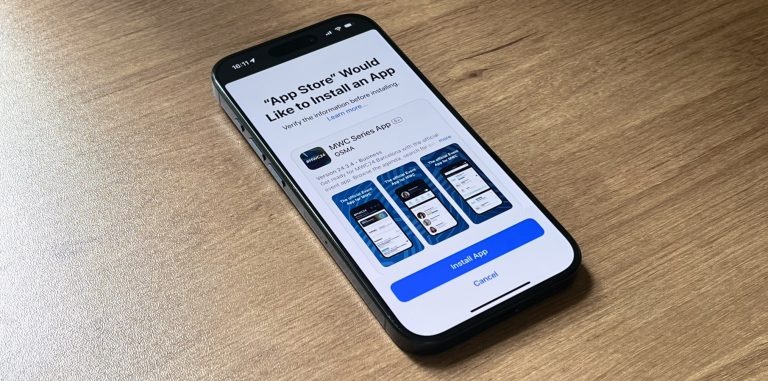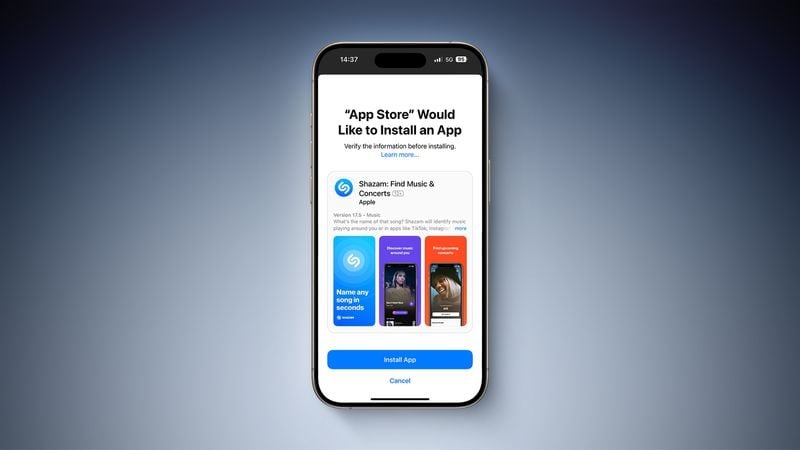The way we access and utilize mobile apps continues to progress rapidly. With this evolution comes growing attention on app safety, security, and transparency regarding origin and data practices. In response to escalating concerns, Apple recently unveiled a new app verification system for its App Store aimed at users in the European Union.
Let’s explore what this verification process involves, its intended benefits, potential implementation challenges, and how it represents a collective step towards building and maintaining trust in the iOS app ecosystem.
Demystifying the Download: What Does App Verification Entail?
The main goal of Apple’s new on-screen app verification display is to provide users with more robust information about an app before they install it. This additional transparency could cover details such as:
- Verified Developer Identity: Confirming the real identity and contact information of the developer.
- App Ownership: Clear indication of the specific company or individual owning and operating the app.
- Data Collection & Usage: Overview of how the app collects user data, what it collects, and how this data is utilized.
- App Permissions: Granular description of the specific permissions the app requests access to, alongside explanations of how these permissions are actually used by the app.

Constructing Trust in the App Marketplace
For users, Apple’s app verification system offers several important benefits surrounding informed decision-making and fostering trust during app downloads and usage:
- Empowered Decisions: Understanding who developed an app and what company owns it enables users to research and make fully informed installation decisions.
- Built Trust: Increased transparency into data handling practices and permission usage creates trust that personal data is being responsibly managed.
- Enhanced Security: Reduced ability for fake or scam apps to disguise themselves as legitimate software developed by trusted entities.
Evolving App Developer Practices
For app developers selling products through Apple’s platforms, embracing these added transparency requirements does introduce certain changes worth considering:
- More Robust Submission Process: Complying with app verification guidelines will require preparing and submitting additional documentation during app review.
- Ongoing Monitoring Needs: Developers must accurately monitor and audit how their live apps gather and leverage user data to remain compliant with posted privacy policies.
- Built Trust, More Users: Despite added responsibilities, app verification helps construct deeper user trust that can significantly expand an app’s addressable market and increase conversions.
Key Challenges in Realizing Consistent App Transparency
Platforms like Apple that aim to deliver more robust app verification face certain challenges that must be tackled for successful global implementations:
- Preventing Misuse: Educating users to recognize that app verification displays do not guarantee completely secure software without risk.
- Combating Fraud: Establishing technically rigorous review processes and policies to minimize potential for verification exploitation by malicious entities.
- Managing Complexity: Building streamlined systems and tools to prevent app developer frustration as transparency rules grow increasingly multifaceted.
The Role of Cooperative Effort
Ultimately, achieving meaningful transparency in the app ecosystem hinges on cooperation between multiple stakeholders:
- App Developers: Willingly embracing transparency requirements during development and remaining accountable for data practices.
- App Store Platforms: Crafting intuitive verification protocols while proactively educating consumers to support informed decisions.
- Policy Makers: Instituting clear legal frameworks, standards, and regulations surrounding allowable data gathering/use and disclosure policies.
Share Your Perspective on the Future of App Transparency
We’ve explored the key tenants of Apple’s nascent app verification system for European iOS users. What are your thoughts on this initiative and the ideal path towards transparent, trustworthy, and secure mobile apps?
Does Apple’s implementation represent a positive step in the right direction? What comparisons can be made to similar transparency efforts like Google Play Store app vetting? How can consumers, developers, and regulators work together to balance app innovation with appropriate data protections?
Please share your feedback, analysis, and questions via the comment section below. Let’s keep the conversation going on how we can jointly ensure mobile app trust and safety advances in parallel with the breakneck pace of technological progress.










Add Comment